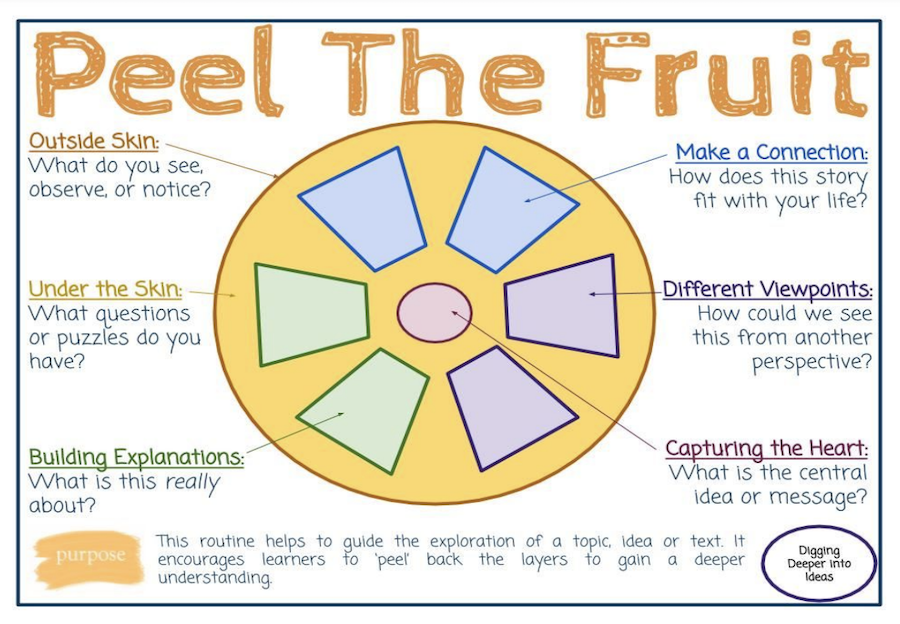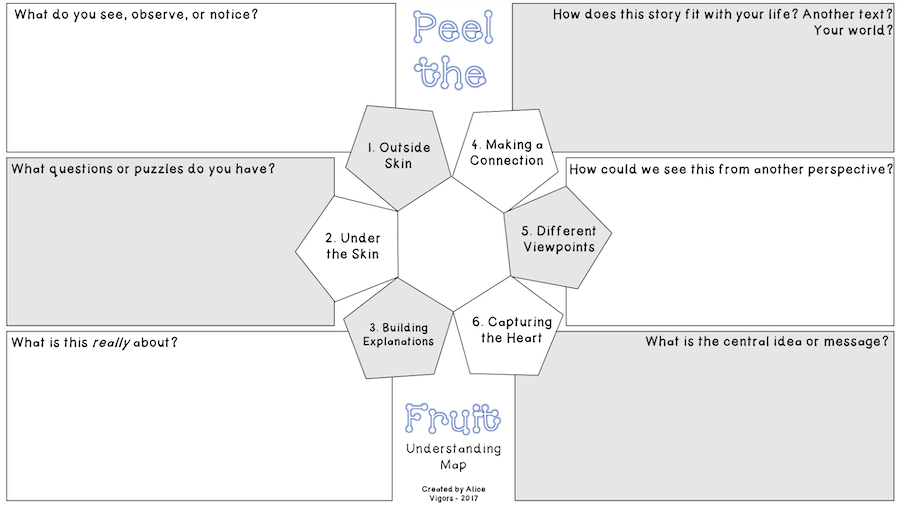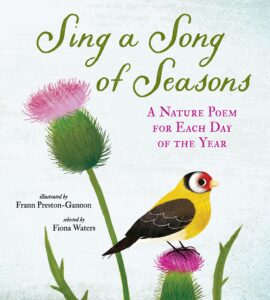Invite Your Students to Peel Some Poems
 By Kathleen Palmieri
By Kathleen Palmieri
April is National Poetry Month and there is no better time to immerse students in reading poetry and writing original poems.
I keep Sing a Song of Seasons: A Nature Poem for Each Day Of The Year with poems illustrated by Frann Preston-Gannon and selected by Fiona Waters, in the front of my classroom, and each morning a student volunteers to read the poem for that day.
After the student reads the poem, the class uses the “Peel The Fruit” thinking routine from Harvard University. It was developed as part of the Visible Thinking framework of Project Zero, developed at the Harvard Graduate School of Education.
This easy-to-grasp routine helps students gain understanding of a topic, idea, text, or a poem.
The idea is to “Peel back the layers to gain a deeper understanding.” I started with this idea while reading about the Harvard project, and then found great templates at Thinking Pathways that I’ve implemented in my classroom. The first is a great visual that also guides the students through the discussion process:

Exploring the templates
Notice the different areas of exploration such as the surface understanding labeled the “Outside Skin.” Beginning with the initial observation of what is seen and noticed, students then dig deeper “Under the Skin” asking questions that arise. The routine builds into discovering what the poem could really be about, and then moving students into making connections, developing perspective, and revealing the theme, message, or central idea.
The second template provides an “Understanding Map” that allows space for students to write down their thoughts at each part of the routine.

You can download these free templates and see videos and examples of student work at this webpage.
Writing Inanimate Object Poems
This thinking routine also helps to spark ideas and interest in students to write original poems. One type of poem that has taken over my classroom recently is the “Inanimate Object Poem.” Typically this style of poem is known as an “Object Poem,” but my students have taken it a bit further.
Choosing an object gives the student the opportunity to look at something quite ordinary and write about it using only clues (without giving its name). Here is an original “Inanimate Object” poem:
Comfy, soft, warm,
So many blankets
Where we spend our nights
I feel so warm
Big not small
Huge not tiny
Stable not weak
Twin or king,
Doesn’t matter to me
Mia H.
While April is National Poetry Month, my students love to read and write poetry throughout the school year. It is an engaging way to get students to read, analyze, understand and use figurative language, and best of all, write!
Kathleen Palmieri is a National Board Certified Teacher and NBCT Professional Learning facilitator. She is a fifth grade educator in upstate New York who reviews and writes regularly for MiddleWeb. With a passion for literacy and learning in the classroom, she participates in various writing workshops, curriculum writing endeavors, and math presentations.
As a lifelong learner, Kathie is an avid reader and researcher of educational practices and techniques. She collaborates with colleagues and globally on Twitter @Kathleen Palmieri NBCT and expands her education adventures at www.kathleenpalmieri.com.































